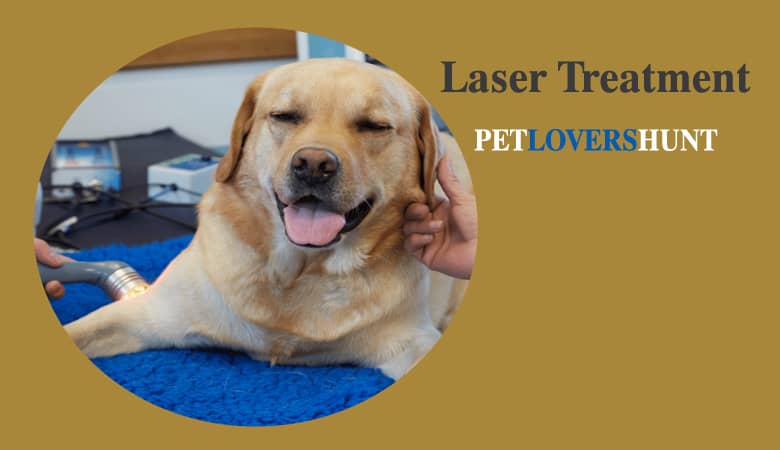This Is How Laser Treatment Can Help Your Dog

Maybe you’ve heard by now about laser therapy in pets or your dog already benefits from it. In this article, you will find more information about laser treatment in dogs and how it can help your pet.
This technology was first implemented in 1976 when Professor Endre Mester discovered that if you shave the hair on the back of a rat and lighten the area with a specific dose of light, their hair will grow faster.
Nowadays, this technology is much more advanced than then, but the basic principle is the same.
How does laser therapy work?
The word “laser” actually stands for Light Amplification by the Stimulated Emission of Radiation. In other words, laser is a coherent, convergent, and monochromatic beam of electromagnetic radiation.
A laser device emits a focused light beam, which interacts at a cellular level with the cytochrome c complex in the mitochondria. When laser light is absorbed by your dog’s living tissue, it triggers biological reactions in its cells. A variety of beneficial chemicals are produced at the cellular level and transported in the body through blood and lymph flow, thus obtaining broad systemic effects, and not just local.
This cellular stimulation creates more energy and better cellular communication, which leads to improved growth and nutrition of tissues and cells, and extended cell life. In short, laser treatment has a stimulating effect on the tissues, favoring their healing or regeneration.
Laser treatment can improve:
- ATP (Adenosine triphosphate) production
- Cellular metabolism
- Collagen production
- Enzyme production
- Protein synthesis
- Blood flow
- Lymphatic flow and drainage
- Inflammation
What is laser treatment used for?
Laser light can be used on a variety of injuries and lesions, making this technology help reduce inflammation and pain, heal wounds, and regenerate tissues.
Laser treatment is mainly used with success in musculoskeletal conditions in dogs, such as:
- Hip dysplasia
- Arthritis
- Articular pain
- Elbow osteoarthritis
- Tendon weakness
- Back and neck pain
- Intervertebral disc disease
- Spinal problems
- Knee pain induced by torn ligaments, arthritis, or tendonitis
Additionally to musculoskeletal disorders, cold laser therapy for dogs can also be used to treat:
- Anal and perianal fistulas
- Nerve lesions
- Facial nerve paralysis
- Ear infections
- Pododermatitis
- Inflammations
- Skin wounds and burns
- Periodontal diseases
- Gingivitis and stomatitis
- Acute pain due to accidents, trauma, or post-surgical pain
Why you should use it
Laser therapy for dogs offers a non-invasive, pain-free, surgery-free, and medication-free treatment that is used to treat a variety of medical conditions in pets. It has no known side effects and is considered safe and effective in veterinary therapy.
Over 90% of canine patients show positive results by relieving symptoms after the first sessions of laser therapy.
Laser treatment represents a great way to improve the quality of life of your suffering pet. To find out if your beloved dog is suffering, keep an eye on these changes in its behavior:
- Abnormal sitting or lying position.
- Bedtime agitation or generalized agitation.
- Restlessness.
- Crying, moaning, or other vocalizations.
- Lameness – the dog is unable to stand up or lie down.
- Difficulty getting in the car or going down the stairs.
- Apathy.
- Lack of appetite and weight loss.
- Tremor.
- The presence of tumor masses, burns, or other lesions on its skin.
Laser therapy for dogs can also be used as an adjuvant method of treatment, in combination with other therapies to speed up regeneration and healing. The effects of laser therapy are cumulative, and acute conditions usually resolve quickly during a treatment session. Chronic conditions can be controlled with regular treatments as directed by your veterinarian.
This treatment for dogs is very relaxing. As the painful or inflamed areas calm down and the inflammation and pain diminish, the anxiety and tension that your dog may have quickly disappeared.




